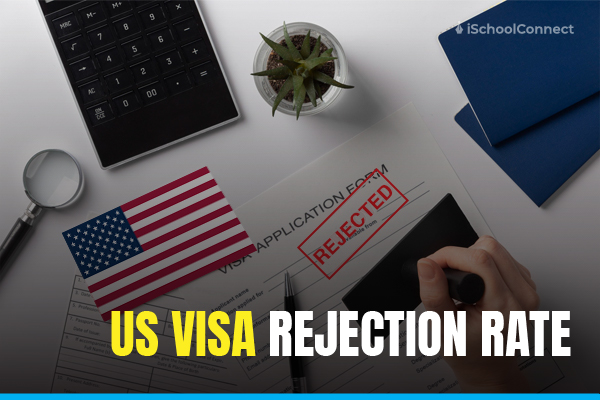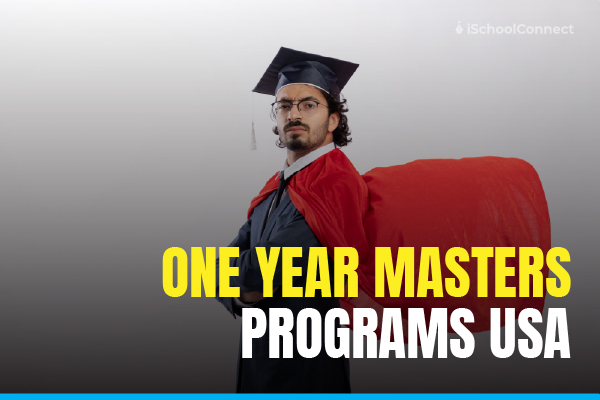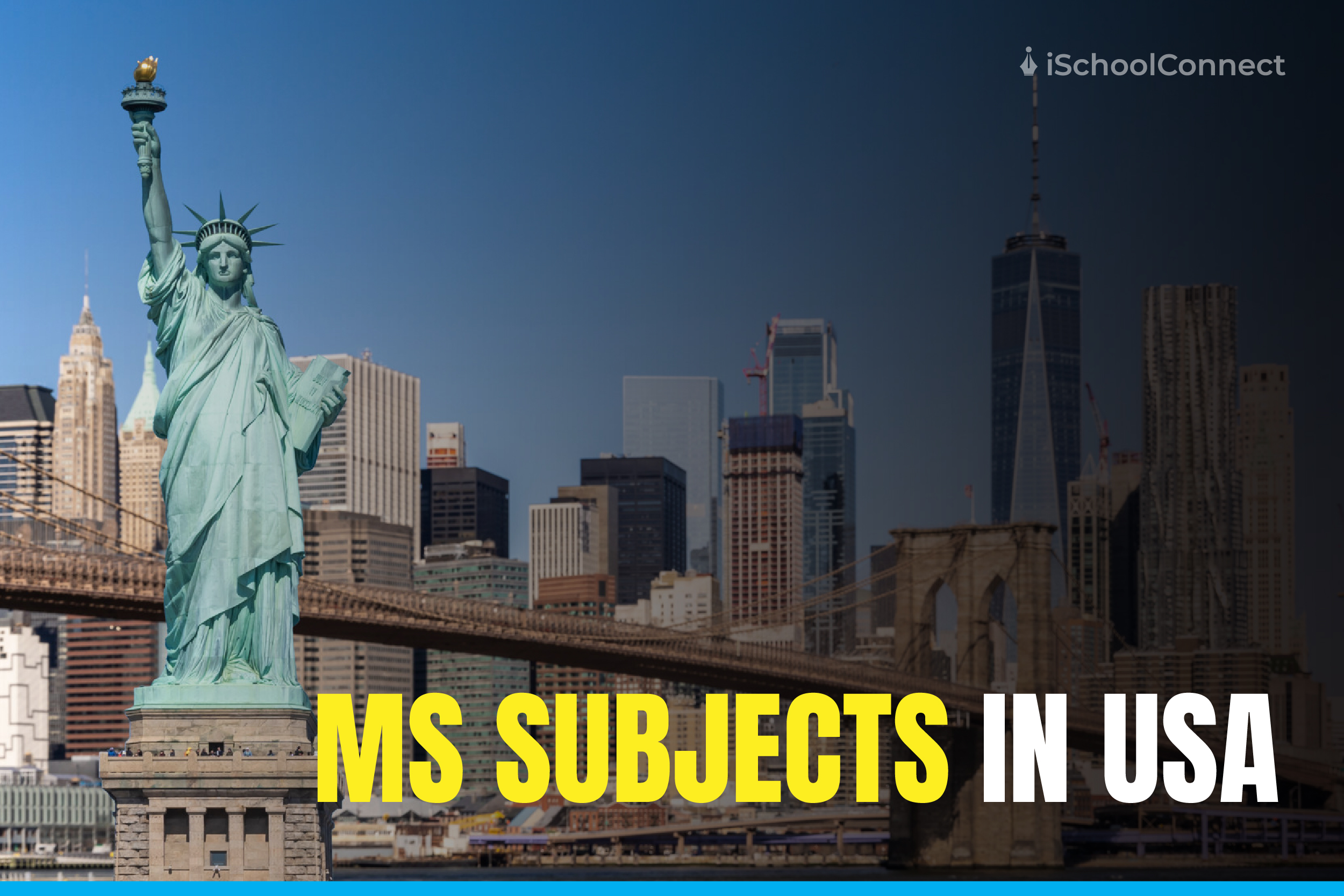Table of Contents
- Key Tips to Increase Approval Chances
- Why Are US Student Visa Applications Rejected?
- Steps to Take After a US Visa Rejection
- Role of the US Embassy in US Visa Rejection Rate
- No Official Rejection Letter
- Visa Interview Questions to Prepare for After Rejection
- Tips for Boosting US Visa Approval for International Students
- Conclusion
- FAQs
In 2023, 36% of student visa applications by US authorities were denied, with rejections increasing by 2% in 2024. Common US Visa Rejection Reasons include incomplete applications, inadequate financial proof, and failure to establish nonimmigrant intent. Indian students, however, remained the largest group of international students in the US, accounting for 29% of all visa issuances.
Key Tips to Increase Approval Chances
- Complete Documentation: Ensure all required documents, like Form I-20 and financial proofs, are accurate.
- Prove Nonimmigrant Intent: Show strong ties to your home country to address one of the key US Visa Rejection Reasons.
- Interview Preparedness: Clearly explain your academic plans and funding sources.
Reapply as soon as issues from the first attempt are resolved, with student visa appointments available from late May to August 2024.
Why Are US Student Visa Applications Rejected?
Securing a US student visa is an important milestone for international students, but the process can be complex. Several common mistakes can lead to rejection. Here’s a breakdown of the key US Visa Rejection Reasons and how to avoid them:
Missing or Incomplete Documents
- What Happens: Failing to provide all required documentation can result in immediate rejection.
- How to Avoid: Double-check the list of documents needed for your visa type and ensure everything is submitted correctly.
Weak Ties to Your Home Country
- What Happens: Visa officers may question your intention to return home after studying if you can’t show strong connections.
- How to Avoid: Provide evidence of commitments like family, property, or job opportunities that will bring you back home after your studies.
Weak Academic Record
- What Happens: A low GPA, poor academic record, or unexplained gaps can make visa officers question your dedication to your studies.
- How to Avoid: Be prepared to explain any academic gaps and emphasize your commitment to your education and future career.
Providing False Information
- What Happens: Giving misleading or false information can lead to rejection and even legal quagmires.
- How to Avoid: Always be truthful in your application and avoid exaggerating any part of your background or financial status.
Previous Visa Rejections
- What Happens: If you’ve been rejected for a US visa before, it can negatively affect your chances of approval.
- How to Avoid: Address any past visa rejections honestly and explain what has changed in your circumstances to improve your chances now.
Insufficient Financial Proof
- What Happens: Not showing enough financial resources to cover tuition and living costs can lead to denial.
- How to Avoid: Submit clear proof of your financial capability, such as bank statements, scholarships, or sponsor letters.
Poor Performance in the Interview
- What Happens: Failing to clearly explain why you want to study in the US or what your plans are after graduation can cause doubts.
- How to Avoid: Practice your responses and be ready to clearly articulate your academic goals, study plans, and future intentions.
Low English Language Proficiency
- What Happens: Lack of English language proficiency or not meeting minimum test scores (TOEFL, IELTS, PTE) can result in rejection.
- How to Avoid: Take the required language proficiency test and ensure you meet or exceed the minimum score for your visa application.
Criminal History
- What Happens: A criminal record can create serious issues with your visa application.
- How to Avoid: Disclose any past criminal issues and provide appropriate documentation to explain and resolve them.
Acceptance from Unaccredited Institutions
- What Happens: An offer from an unaccredited or low-ranked school may raise concerns about the legitimacy of your studies.
- How to Avoid: Apply to well-recognized, accredited institutions to strengthen your academic profile and visa application.
By understanding these US Visa Rejection Reasons and preparing carefully, you can increase your chances of securing a US student visa. Stay organized, be honest, and ensure you meet all the necessary requirements.
Explore here: M1 visa | Eligibility, requirements, process, and more
Steps to Take After a US Visa Rejection
A US visa rejection can be disappointing, but it’s not the end of the world. Follow these steps to improve your chances of a successful reapplication:
- Understand the US Visa Rejection Reasons
Review the rejection notice to identify the specific cause (e.g., insufficient documentation or lack of ties to your home country). This will guide your next steps.
- Consult a Visa Expert
Seek advice from a visa expert or immigration attorney for professional insights and strategies to address your case effectively.
- Strengthen Your Documentation
Gather all necessary documents, ensuring they are complete and accurate. Address any gaps or issues identified in your previous application. Key documents include:
- Completed DS-160 form
- Valid passport
- Proof of financial support
- Educational documents
- Previous visa rejection letter
- Prepare for a Strong Reapplication
Review your previous application and practice for the interview. Focus on areas where you faced challenges to present a stronger case.
- Explore Alternative Options
If reapplying for the same visa seems unlikely, consider other visa types or destinations that may better suit your needs.
Explore here: Canadian Visa Rejection Rate: Reasons and Tips for Success
Role of the US Embassy in US Visa Rejection Rate
In 2023, the US consular team in India issued over 1,40,000 student visas, highlighting the country’s dedication to fostering educational exchanges. However, not all visa applications are approved.
As former US Secretary of State Colin Powell once said, “A dream doesn’t become reality through magic. It takes sweat, determination, and hard work.” This is true for the visa process, where careful preparation plays a crucial role in the outcome.
Here’s how the US Embassy impacts the visa rejection rate:
No Official Rejection Letter
- The US Embassy does not send an official rejection letter. Instead, the decision is communicated during the visa interview. If denied, applicants receive a slip, either 221(g) or 214(b), which indicates the specific US Visa Rejection Reasons for the denial.
221(g) Rejection
- This slip is issued when the consular officer feels there isn’t enough information to determine the applicant’s eligibility. It could be due to an incomplete application, missing documents, or the need for further administrative processing. Once additional details are provided, the embassy will inform you of the final decision.
214(b) Rejection
- The 214(b) slip is issued when the application is denied for more general reasons. Common causes include being perceived as a potential immigrant, insufficient financial proof, or failure to demonstrate strong ties to the home country.
Understanding these rejections can help you better prepare for a successful visa application.
Also Read: 10 popular Jobs in USA you must know about
Visa Interview Questions to Prepare for After Rejection
After a US visa rejection, your next interview becomes even more important. To help you prepare for your reapplication, here are some common questions you may face:
- What changes have you made to your application since your last rejection?
This question evaluates how well you’ve addressed previous US Visa Rejection Reasons and what improvements you’ve made in your application. - Why do you think your visa was denied previously?
Be prepared to explain your understanding of the reasons for the prior denial and show how you’ve rectified those issues. - What ties do you have to your home country?
Visa officers will want to see evidence that you have strong connections to your home country, ensuring that you will return after your studies. - How will you finance your stay in the US?
You must demonstrate that you have enough financial resources to cover your tuition, living expenses, and other costs during your stay in the US. - What are your plans after completing your studies or visit?
Visa officers will ask this to ensure that you have a clear plan for your return to your home country once your studies or visit are completed.
Preparing for these questions thoughtfully and honestly can help you navigate your visa interview with confidence and increase your chances of approval.
Learn More: US visa wait time | Appointment wait time slashed by 75%
Tips for Boosting US Visa Approval for International Students
Securing a US visa as an international student can be challenging, but by demonstrating nonimmigrant intent and taking proactive steps, you can significantly improve your chances of approval. Here’s how students can boost their chances of getting a US visa:
Demonstrate Strong Ties to Your Home Country
Show that you have strong connections to your home country that will ensure your return after your studies. This can include:
- Family: Immediate family members living in your home country.
- Property: Ownership of land or a home.
- Job Opportunities: A job offer or career prospects waiting for you after graduation.
- Community Involvement: Participation in community or social groups in your home country.
Present a Clear Study Plan
Ensure that your academic goals are well-defined. A structured study plan not only strengthens your application but also shows that you have a clear path for your future:
- A well-defined academic program that aligns with your career goals.
- A future career plan demonstrating how your US education will help you contribute to your home country’s development.
Show Sufficient Financial Resources
Proving that you have adequate funds to cover your tuition, living expenses, and other costs is crucial:
- Bank Statements: Provide recent bank statements or financial guarantees.
- Scholarships: Include any scholarship offers or sponsor letters.
- Proof of Financial Stability: Ensure you have enough funds to support yourself without the need to work in the US.
Understand Nonimmigrant Intent
Consular officers assess whether applicants intend to stay in the US temporarily or return home after their studies. Demonstrating that you will not overstay your visa is critical for approval.
Be Prepared for the Visa Interview
During the visa interview, consular officers will assess:
- Your ties to your home country.
- Your financial situation.
- Your academic and career plans. Ensure you provide clear and consistent answers to demonstrate your nonimmigrant intent.
By strengthening these key aspects of your application, you can boost your chances of visa approval and achieve your academic goals in the US.
Read More: US visa application fees and costs | A comprehensive guide
Conclusion
- Understanding and addressing US visa rejection reasons is crucial for improving your chances of approval. Ensuring complete documentation, strong ties to your home country, and sufficient financial proof can make a significant difference.
- By being well-prepared for the visa interview, clearly articulating your study plans, and demonstrating your intent to return after completing your studies, you can strengthen your application.
- Learning from past rejections, consulting experts, and reapplying with enhanced evidence can help overcome US visa rejection reasons and increase the likelihood of approval.
FAQs
Ques 1: What is a U.S. visa refusal letter?
Answer 1: A U.S. visa refusal letter is an official document informing applicants that their non-immigrant visa application has been denied after review. It outlines the reason for refusal, such as failure to meet eligibility requirements, and differs from a rejection, which occurs due to incomplete applications.
Ques 2: What are common B1/B2 visa rejection reasons?
Answer 2: Common Reasons for B1/B2 Visa Rejections:
- Applying for an incorrect visa category.
- Providing inaccurate or conflicting details.
- Failing to prove nonimmigrant intent or convincing ties to the home country.
- Appearing overconfident or unprepared during the interview.
- Submitting incomplete applications or inconsistent information.
Ques 3: How soon can I reapply for a U.S. visa after refusal?
Answer 3: You can reapply for a U.S. visa three business days after a refusal. There is no mandatory waiting period of 6 months or more. However, it’s advised not to reapply too soon unless there have been significant changes in your circumstances.
Ques 4: How long does the U.S. Embassy keep a record of visa denials?
Answer 4: The U.S. Embassy retains records of visa denials as follows:
- Nonimmigrant visa records (for temporary stays) are kept for 5 years.
- Immigrant visa records (for permanent residency) are kept for 25 years.
- All visa case records, whether approved or denied, are confidentially stored for up to 100 years, in accordance with INA Section 222(f).
Ques 5: How many days after rejection can I apply for an F1 visa?
Answer 5: You can reapply for an F1 visa as soon as 3 business days after a rejection.
Ques 6: How do I overcome a 214(b) visa rejection?
Answer 6: To overcome a 214(b) visa rejection:
- Provide stronger evidence: Submit additional documents to support your ties to your home country and financial stability.
- Address overlooked aspects: Ensure all aspects of your application, including the purpose of the visit and intent to return, are clearly addressed.
- Prepare thoroughly for the interview: Practice answering common visa interview questions confidently and consistently.






